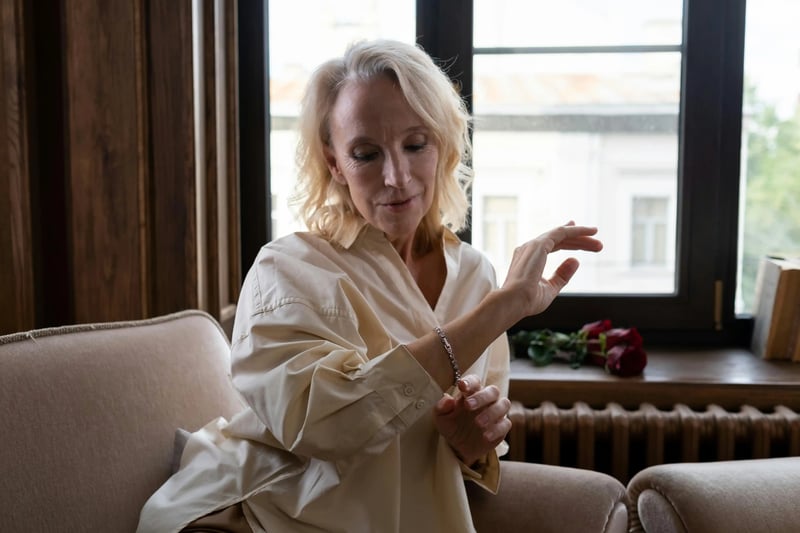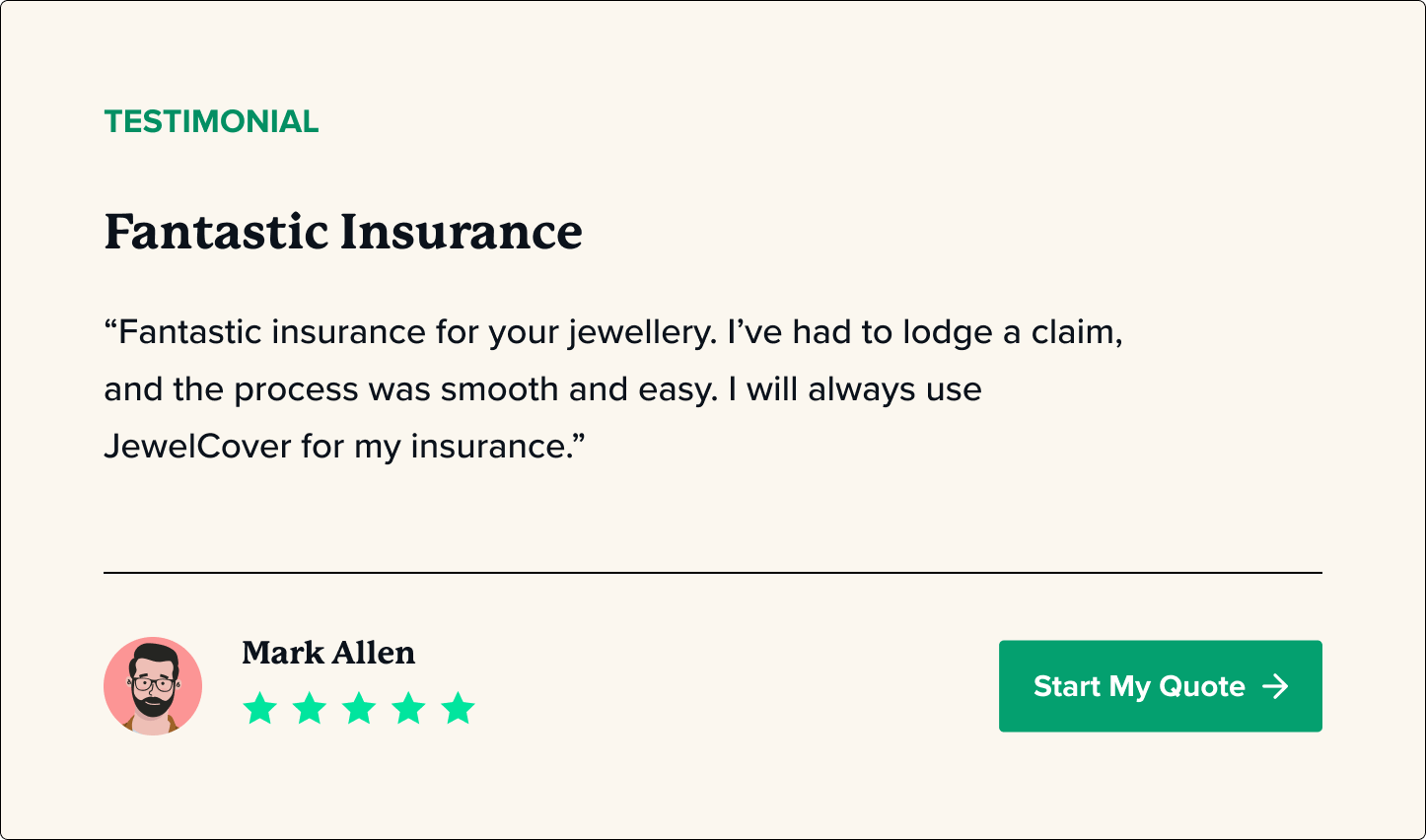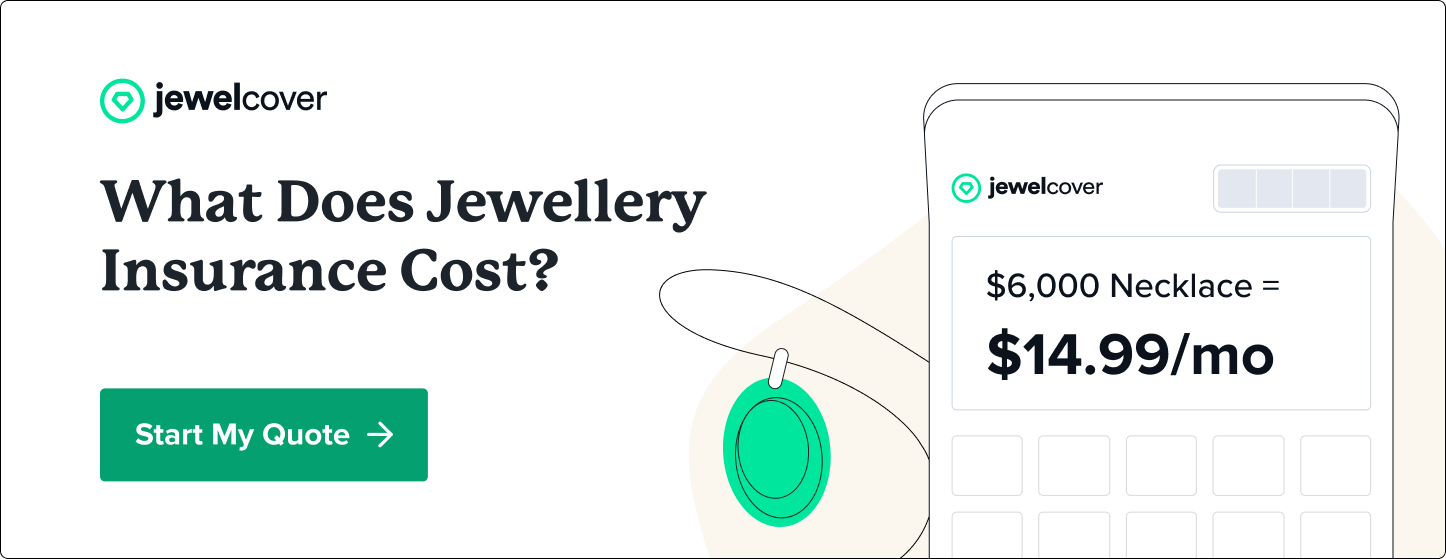|
TL;DR Vintage jewellery insurance often needs specialist valuations, detailed provenance, and more frequent revaluations due to rarity and market shifts. Modern jewellery insurance usually has simpler documentation, easier replacement, and stable valuations. Coverage differences stem from replacement challenges, repair feasibility, and how each type’s value is assessed over time. |
Jewellery age plays a bigger role in insurance than most people realise, especially regarding how items are valued and covered. A 1950s Cartier watch and a brand new Tiffany Victoria Tennis Bracelet could be covered under the same policy, but they'll need different approaches to valuation, and initial and ongoing assessment.
The key difference isn't whether vintage and modern pieces can be insured together—they usually can. Understanding why professional valuations matter more for older pieces and how market fluctuations affect each type differently is important.
Recent data from the Knight Frank Luxury Investment Index shows that vintage jewellery has appreciated by 33.5% over the past decade (2015–2025). Yet most Australians approach insuring modern and vintage jewellery without considering these valuation differences.
Together, we'll explore why your jewellery's birthday influences your coverage strategy and how proper valuation ensures each piece is considered appropriately for coverage based on its characteristics and history.

Understanding Vintage vs Modern Jewellery Classifications
The line between vintage and modern jewellery isn't set in stone. Still, insurers need clear categories to assess risk and determine coverage approaches. What counts as "vintage" for insurance purposes often surprises people—those statement gold earrings from the 1990s might already qualify.
What Defines Jewellery as Vintage?
Most Australian insurers consider jewellery vintage once it reaches 20 to 30 years of age, though this threshold varies between providers. A piece from 1995 sits firmly in vintage territory for many insurers, whilst others might wait until the 30-year mark.
Designer provenance plays a crucial role in classification. A 25-year-old Bulgari necklace carries more vintage weight than a similarly aged piece from a lesser-known brand. Historical significance can also fast-track classification—Art Deco pieces from the 1920s or mid-century modern designs from the 1950s often receive vintage status regardless of strict age requirements.
The classification matters because it influences how insurers approach everything from initial valuation to ongoing assessment. Vintage pieces typically require specialist appraisers who understand period styles, construction techniques, and historical market trends.
Modern Jewellery Insurance Characteristics
Contemporary pieces benefit from straightforward documentation trails. When you buy a new wedding ring from a retailer, you receive detailed certificates, warranties, and purchase receipts—everything insurers love to see.
Standardised valuation processes usually make modern jewellery simpler to assess. Current market prices for similar pieces are readily available, and replacement costs can usually be calculated easily.
Modern pieces also offer replacement certainties that vintage items usually cannot match. Suppose your two-year-old Van Cleef & Arpels necklace is stolen. In that case, the insurer probably knows where to source a replacement and its cost.
Valuation Differences That Impact Your Coverage
The biggest shock for most people isn't the age classification of their jewellery—it's discovering how dramatically valuation approaches differ between vintage and modern pieces. These differences can directly impact premiums, coverage limits, and claim outcomes.
Vintage Jewellery Valuation Challenges
Finding comparable sales data for a 1940s Harry Winston necklace presents a genuine puzzle. Unlike modern pieces with consistent retail pricing, vintage jewellery is often one-of-a-kind or limited productions that rarely come to market.
Specialist valuers with period and brand expertise become essential for accurate valuations. A general jewellery valuer might value a 1920s Cartier Art Deco bracelet based on its gold weight and stone quality, potentially missing thousands of dollars in historical and design value. Period specialists understand construction techniques, maker's marks, and design significance that generic appraisers may overlook.
Rarity amplifies valuation complexity exponentially. When only three examples of a particular 1950s Bulgari design are known to exist, establishing market value becomes more art than science. Valuers must consider auction records, private sales, and comparative pieces from the same period and maker.
Average valuation costs reflect this complexity. Vintage piece valuations typically range from $200 to $500 in Australia, compared to $80 to $100 for modern jewellery. Specialist expertise often results in more accurate coverage recommendations. Due to their unique characteristics, not all vintage pieces can be covered. Start a quote now to explore whether your vintage jewellery can be insured with JewelCover.
Modern Jewellery Valuation Advantages
Contemporary pieces benefit from transparent pricing structures. When you purchase a new Tiffany & Co. wedding ring, similar pieces sell at predictable price points across multiple retailers. This pricing consistency makes valuation straightforward and disputes rare.
With modern pieces, original purchase verification is usually simple. Your receipt, certificate, and warranty documentation provide clear value baselines that many insurers readily accept. Many jewellers maintain digital records that can verify purchase details years later.
Contemporary market data flows freely through retail channels, auction houses, and online platforms. Insurers can usually quickly verify the current replacement cost for a two-year-old Chopard diamond pendant by checking current retail prices across multiple authorised dealers.
Understanding these distinctions helps you budget appropriately for valuation costs and set realistic expectations for the coverage process.
Most Australian insurers require professional valuations for items regardless of age. However, vintage pieces often need more frequent revaluations to track market appreciation, whilst modern pieces might maintain stable values for longer periods.

Coverage Options: Where Vintage and Modern Diverge
Some vintage items are eligible for cover, but not all. It usually depends on condition, documentation, current valuation and availability of materials. When you insure jewellery, whether it's a modern diamond pendant or an antique Edwardian ring, coverage hinges on one central question: what happens when something goes wrong? That's where replacement and damage policies start to diverge based on age.
Replacement Considerations
Modern jewellery tends to be easier to replace. Insurers can usually source the same model—or a close match—from the brand's current collection. The materials, design, and pricing are often well-documented, making replacement a relatively straightforward process.
Vintage pieces, however, pose a different challenge. An insurer may be able to match the type of gemstone or replicate the metalwork, but finding a replacement that mirrors the exact style, patina, or provenance of a vintage piece is rarely possible. For older jewellery, replacement often means sourcing a piece with comparable characteristics—similar era, materials, and condition—rather than an identical item.
Damage Considerations
Damage remains the most common reason people make a claim on their jewellery insurance. JewelCover's 2024 claims data showed that 52% of all claims were related to damage, not loss or theft. Vintage pieces are particularly vulnerable.
Older jewellery often uses materials or settings that degrade over time. Clasps weaken. Claws loosen. Metals become more brittle, especially in antique or early 20th-century pieces. Even regular wear—zipping a coat, bumping a ring against a table—can lead to cracked enamel, chipped stones, or broken settings in vintage designs.
In contrast, modern jewellery is generally built using advanced manufacturing processes, more durable alloys and created more recently, making it generally more resilient to daily knocks and scrapes. Damage can still happen, but repairs for modern pieces may be more straightforward in some cases due to the wider availability of compatible materials, craftsmanship and documentation, depending on the design.
When deciding how to insure jewellery of varying ages, it's important to understand how likely each piece is to suffer damage, and how feasible it will be to restore it. That's where specialist cover may come in. JewelCover's policies include the option to return your jewellery to your preferred jeweller, if possible, so repairs can be handled by someone who knows the materials and the maker for vintage jewellery that can be insured.
Pro tip: If your vintage jewellery shows signs of wear, like a loose setting or worn clasp, it may be worth repairing your jewellery and updating your policy before a claim becomes necessary. Damage prevention starts with up-to-date valuations and active maintenance.
Jewellery Insurance Documentation Requirements for Vintage vs Modern Jewellery
Insurance starts with proof. Whether your piece is 80 years old or brand new, documentation helps to ensure accurate cover, smoother claims, and suitable replacement or repair.
Vintage Jewellery Documentation Needs
Older pieces usually require more than a visual inspection.
What to keep on file:
-
A professional valuation from a registered jewellery valuer with expertise in period styles is ideal (every 2–3 years).
-
Clear, high-resolution photographs showing all angles, hallmarks, and close-ups of key details.
-
Provenance documents, such as original receipts, past appraisals, maker's certificates, or auction records.
Modern Jewellery Documentation Standards
Newer pieces come with built-in paperwork, and your insurer will usually want to see it.
What to collect and store:
-
Original receipts and certificates from the jeweller or brand.
-
Warranty and authenticity paperwork, including diamond or gemstone grading reports (e.g. GIA, AGS).
-
Ongoing valuations every 2–3 years to reflect market shifts or upgrades.
Keeping these documents in digital form (and backing them up) could help to speed up the claims process if anything goes wrong.

Frequently Asked Questions About Vintage Jewellery and Insurance
How old is vintage jewellery?
While definitions can vary, many Australian jewellery insurance providers consider pieces vintage once they are between 20 and 30 years old. Classification can also depend on factors like provenance and design significance.
How can you tell if jewellery is vintage?
Clues often include distinctive design styles from a specific era, hallmarks or maker’s marks, and signs of aged craftsmanship. A qualified valuer or appraiser can usually help confirm the estimated age and historical background of your jewellery.
What should you look for when buying vintage jewellery?
Check for authenticity, overall condition, and supporting documentation. Prior valuations, receipts, and brand certificates can help establish provenance and could make future valuations or insurance applications more straightforward.
How do you clean vintage jewellery safely?
Avoid harsh cleaning methods. A soft brush, mild soap, and lukewarm water are suitable for light cleaning, but to reduce the risk of accidental damage to delicate or antique pieces, it’s best to seek professional cleaning.
Can you claim for lost vintage jewellery under home insurance?
Some home and contents policies may include cover, but there could be item limits, exclusions for loss outside the home, and requirements for detailed documentation. Thousands of people choose specialist jewellery cover for more tailored cover.
Does travel insurance include cover for jewellery?
Travel insurance may provide limited cover for jewellery, but this often depends on declared values and exclusions for checked luggage or wear during travel. A dedicated jewellery insurance policy may offer broader coverage while you’re away from home. Learn more by reading Jewellery Insurance or Travel Insurance - Which Offers the Best Protection for Your Jewellery?
How does jewellery insurance typically work?
Depending on the provider, Jewellery insurance may cover loss, theft, and accidental damage. Most policies require a current valuation and supporting documentation, like receipts or photos. Some insurers offer features such as annual revaluations, and worldwide cover, but these benefits vary by provider.
Coverage That Ages as Gracefully as Your Jewellery
Whether you're insuring a brand-new piece with clean paperwork or a 1990s brooch with a rich backstory, knowing what documentation to keep, how often to update valuations, and what your policy covers makes a big difference.
A tailored approach means you're not applying the same rules to wildly different items. And when it comes time to insure jewellery of any era, clarity comes from working with a provider who understands both the design and the decade.
Not sure if your vintage jewellery is eligible for cover?
Start a quote from JewelCover today.
It’s a practical step toward potentially keeping your jewellery covered.





